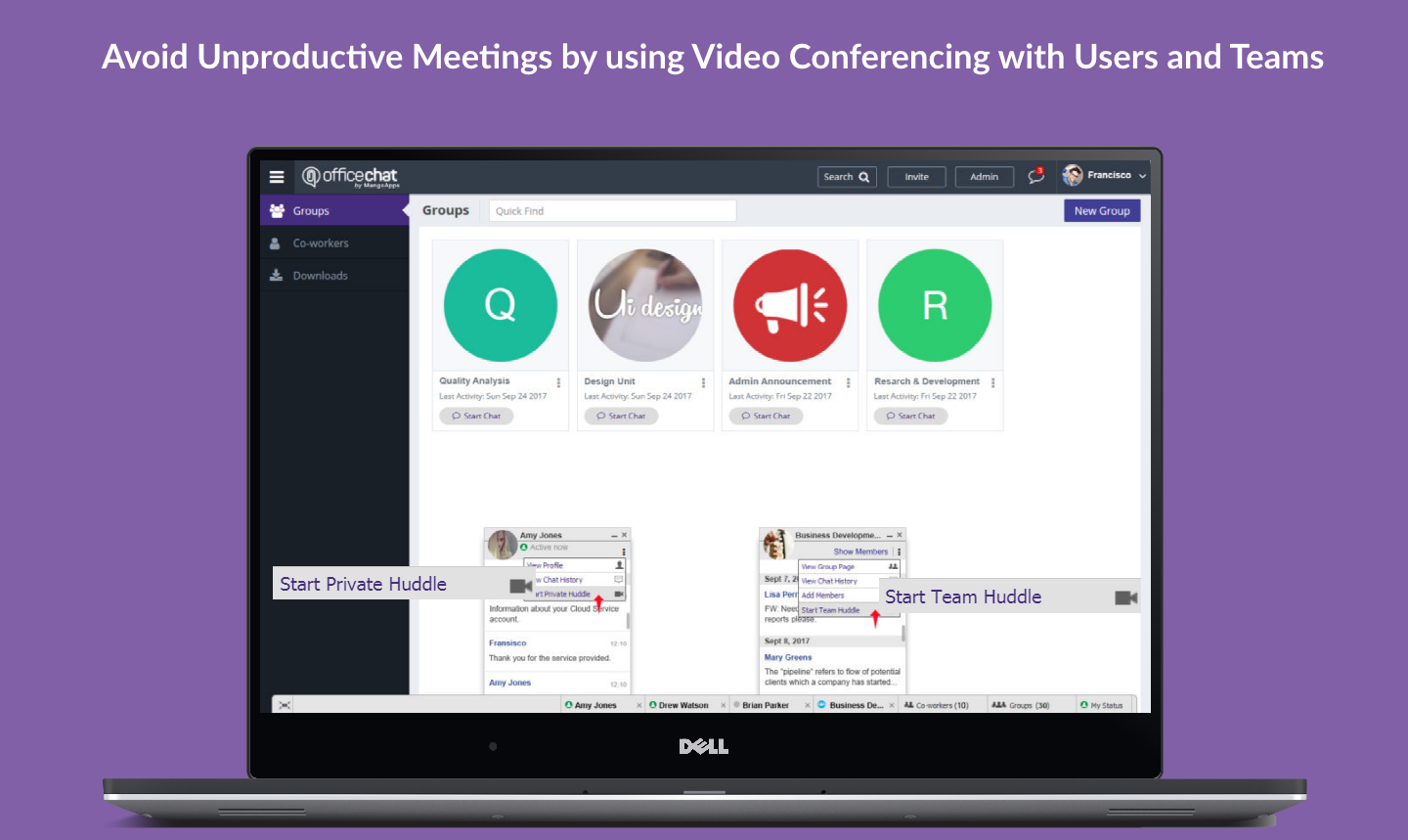

“Like, what are you all saying to each other all secret-like?”) The real numbers are “insane,” Lowder Slacked when he heard them. When I asked Slate staffers to guess how many messages are public, answers ranged from 20 percent to 80 percent that’s a long way from 4 percent. ( Slate thinks its Slack is more open than it actually is. Seventeen percent of our messages are shared in private groups, which require an invitation to join and are hidden even from administrators 79 percent of our Slack chatter takes the form of one-on-one direct messages. But now, Slack has given every employee a virtual office door, and boy do we use them: Since adopting Slack last year, Slate staffers have exchanged 1.2 million messages, and just 4 percent of them have been aired in the public channels that every employee can see.

#In office chat free
In Slate’s New York office, managers sit in offices around the perimeter while the rank and file linger in the middle while bosses are free to convene closed-door meetings, it’s hard for underlings to have a private word unless they physically leave the premises. Trendy open-plan offices are infamous for their cacophonous din-they were originally designed to get workers across the office to strike up conversations that hopefully lead to innovative collaborations-but the Slack headquarters are “crazily quiet,” Butterfield says, because all the chatter has moved online. Slack’s sway over the dynamics of a workplace is so strong, it’s capable of overpowering the physical design of the actual office. “Then they set up a bot to tell me I was fired every time I posted.” First, they programmed Slack so that “anytime I said anything, it came out as a GIF,” Thomas says. When my friend Thomas, a 28-year-old designer, started work at a tech startup in San Francisco, he found that the office had customized its Slack to execute an elaborate hazing ritual. face in Slack to try to get his attention Vogt inserts the Alex face to signify “bad news.” Slate favors a custom emoji of Outward editor Bryan Lowder with a toboggan Photoshopped onto his head when editors drop into a private group to workshop headlines, they announce their presence with a taco emoji. Vogt and Alex Goldman, co-hosts of the Gimlet Media podcast Reply All, have created little emoji of each other’s faces that they use to further develop their lovingly antagonistic office relationship: Goldman drops a P.J. Deadspin taunts staff writer Greg Howard with a mock rap CD cover featuring his face and dubbed “Hollywood Howard.” P.J. CollegeHumor treasures an emoji of a gluten-free duck Briganti says its meaning is unexplainable to outsiders. The chat system makes it easy for users to create their own inside jokes. Slack’s mission is to “make your working life simpler, more pleasant and more productive.” It seems best-suited for the second goal on that list. When the CollegeHumor offices first discovered the Giphy feature, late one Friday afternoon, they couldn’t stop summoning GIF after GIF, leading to “the most nonsense traffic jam ever,” says CollegeHumor writer-director Paul Briganti the company ultimately made its own Giphy channel to prevent the tool from totally derailing actual work threads.


Slack also connects seamlessly with an animated search engine called Giphy just plug in a keyword (like work) and enjoy a related GIF (like Homer Simpson spinning his office chair around and around in a nuclear power plant). Workers can play Jeopardy! in Slack, or host Pokémon battles there. It’s painted in a prep-school plaid pattern with a jellybean color scheme. “Every little thing counts.” And Slack is loaded with little things. Slack founder Stewart Butterfield tells me that his “background in game development really helped in designing Slack”-the company started as an internal messaging system for developers of Butterfield’s now-shuttered video game project Glitch-because whether you’re trying to coax users into an immersive online gaming world or immerse them in their job, “you have so little time to attract their attention,” he says.


 0 kommentar(er)
0 kommentar(er)
